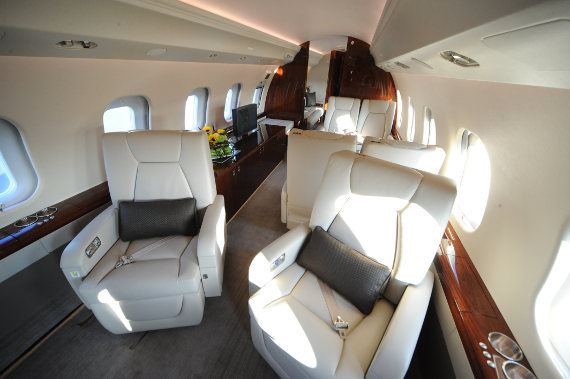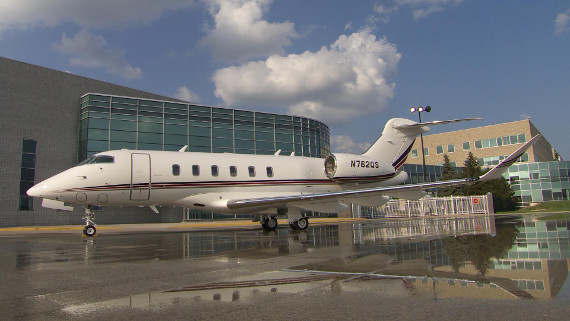If you're weighing up whether to buy your own private aircraft or whether to buy a fraction, the simplest advice you'll hear is how much do you fly? But this is just a basic starting point. The real deciding points are how are you going to use it, what is your budget and what are your personal travel preferences.
In terms of just the flying hours, I've seen various numbers that say, if you fly more than X hours per year then you should be buying your own plane. Pat Gallagher, SVP of Sales at NetJets put it pretty succinctly when he told me "the aircraft brokers will tell you it's 200 hours a year, because they want you to buy a plane, the fractional sellers will tell you it's 400-600 hours a year because they want you to stay in their fractional program."

Three of the key points that Pat Gallagher and his team go through with clients are:
1. Number of Principal Users
If there are multiple users of the aircraft, who may want to use it at similar times then one plane won't do the job. For instance if the CEO and Chairman will need to use a plane at the same time, to go to different locations, then clearly one plane won't work for them.
Most fractional ownership programs allow the use of two aircraft at the same time. Fractional owners can also upgrade and use a larger aircraft than the one they own, so that one person could do a short trip and the second could do a longer haul trip.
2. Number of Locations
Owning an aircraft can make sense if it's based in and serving people in one location. Challenges arise if the aircraft has to serve multiple people based in multiple different locations.
The examples that Pat gave are, 1.the aircraft is based in Chicago, but there's a business partner based in New York City who also uses the plane. The aircraft will spend a lot of time flying back and forth empty between Chicago and New York. 2. An aircraft for a big family office, where the family members are spread throughout the country, but several family members can call on the use of the aircraft. Again the plane will spend a lot of time flying empty legs around the country, as it picks up and drops off the family members. In these multiple location situations the owned aircraft will run up fuel and operating costs as it flies on all these empty legs between the different locations.
3. Privacy
If you as a company or individual own an aircraft then your name will be registered with the FAA, and anyone can track your tail number flight activity through publicly available data sources. For many people this isn't an issue. But, if you want your travel to stay out of the limelight, then using a fractional aircraft provides the anonymity of a plane registered in the fractional companies name.
Some of the other elements to consider in making this decision:
Economics and Budgets
For some people price is not an issue and other factors are more important. But for most of us, if you're buying your own aircraft then bear in mind that the purchase price is just the start. Along with this there are potentially brokerage, legal and inspection fees when you buy. Then the annual costs of operating and maintaining the aircraft will be quite extensive – for jets these can range from about $700,000 per year, up to $4m a year, excluding the depreciation. As the owner you have to cover everything, including the unexpected. A blown tire will cost you $2,000-$3,000. A cracked windshield can vary anywhere from $45k-$70k with usually 12-24 hours of downtime. For some examples here are the full operating costs of a Phenom 300 and here's some sample operating costs of a Challenger 605.
On the fractional side there are several components to your costs in addition to the initial acquisition price. There's a monthly management fee, an occupied hourly charge and potentially a fuel surcharge. Examples for the fractional pricing of a Phenom 300 are here. Fractional ownership usually works out to be a higher cost on a per hour basis, but it allows you to only buy the amount of time that you need.
Control and Customization
If you want to control and oversee the whole experience then you'll want to get your own aircraft. This allows you to select your own pilots and crew, customize the aircraft design, seating arrangement, amenities and paint color. It also means that you can leave your personal items on the aircraft for each time you use it. You'll also need to decide on operational policies and maintenance procedures and whether to run your own flight department or hire an aircraft management company. The choices are all yours.
One Way Flights
Doing a lot of one way flights on an aircraft, is not very efficient and is certainly more expensive. For instance if you fly south to the beach and stay there for a week or two, you'll need to decide if your plane either stays with you, or goes back and forth to pick you up. If the plane stays, you'll have to pay hanger fees and either find a hotel for your crew or fly them back and forth commercially. If you do a lot of one way trips like this it may make more sense to look at fractions or jet cards.
Very Short Term Availability
Fractional providers can have aircraft ready for you in as little as 4-6 hours. But if you need an aircraft in a shorter timeframe, or need it to be standing by at a few minutes notice, then your own private plane is the way to go.

As you can see, the most obvious candidate for whole ownership is one prime user, who frequently flies out and back, from a single location. But this is the ideal scenario and the real world is rarely ideal. So take a good look at your own situation.
One of the smart things to be aware of, is not to overbuy into too large a plane just because it will accomplish all your missions. For instance if most of your flights are just a few people travelling about a 1,000 miles, plus you do the occasional 3,000 mile flight, it can make sense to buy a smaller aircraft for the 1,000 mile missions, then charter or use a jet card in a mid-size or large cabin plane for the longer trips.
For many people and corporations having this collection of solutions is the right answer. It all depends on your travel patterns and requirements. Sometimes owning a plane and supplementing it with a fraction or cards or charter is the right overall solution. For others, a fraction can be the main transportation, supplemented with cards and charter. The key thing is to do a thorough assessment beforehand.

